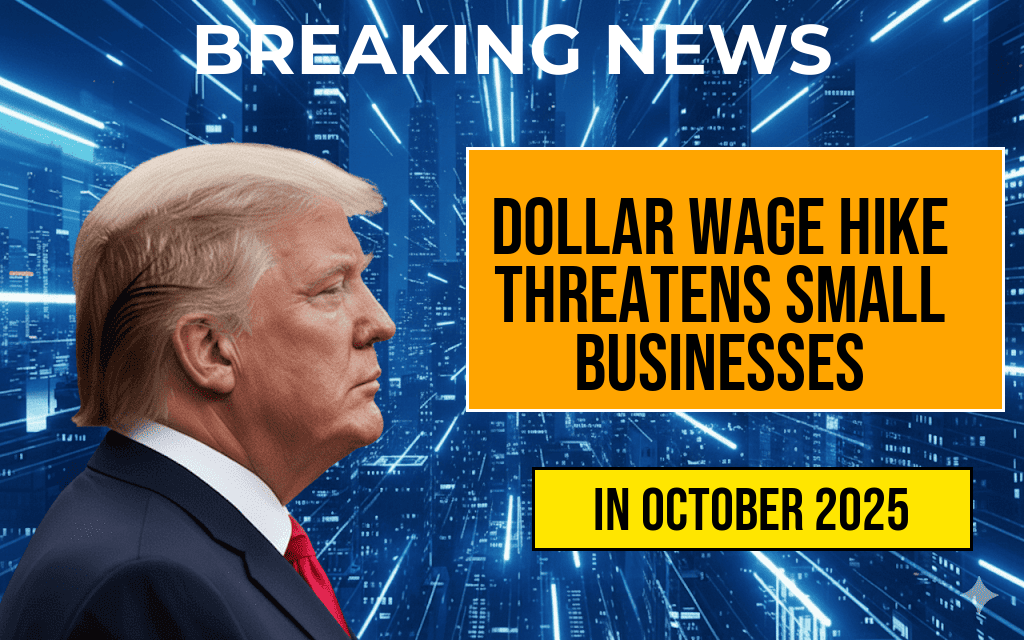Recent debates over proposed increases to the minimum wage in the United States have intensified concerns among small business owners about potential economic impacts. A significant point of contention revolves around a hypothetical scenario where a $1 raise in the minimum wage could lead to widespread layoffs within small enterprises. While advocates argue that such increases promote fair wages and economic mobility, critics warn that even modest wage hikes might strain tight profit margins, prompting some small business owners to reduce their workforce or delay hiring plans. Experts point out that the actual effects are highly variable, depending on industry, location, and business size. As policymakers consider wage legislation, understanding these nuanced financial pressures becomes crucial for balanced economic growth and employment stability.
Potential Impact of a $1 Wage Increase on Small Business Operations
Financial Strain and Profit Margins
Small businesses often operate with limited financial buffers, making them particularly sensitive to changes in labor costs. A $1 increase in the minimum wage, while seemingly modest, can significantly impact payroll expenses for firms with tight profit margins. For example, a small retail store with 10 employees earning near the minimum wage might see an increase of approximately $10 per hour in total labor costs. Over a standard 40-hour workweek, this translates to an additional $400 per employee, or $4,000 weekly for the entire team. Such increases can reduce profitability, especially if the business cannot pass the added costs onto consumers through higher prices.
Employment Levels and Workforce Adjustments
Economic models suggest that increased wages could lead some small employers to reconsider staffing levels. According to a 2021 report by the U.S. Bureau of Labor Statistics, small businesses are more vulnerable to wage hikes due to their typically thinner profit margins. Some owners might respond by laying off employees, reducing hours, or postponing new hires to maintain financial stability. Conversely, others may adopt productivity-enhancing measures or invest in automation to offset higher labor costs, potentially mitigating layoffs but also reshaping employment structures.
Industry-Specific and Regional Variations
Sectoral Differences
| Industry | Typical Wage Sensitivity | Potential Response |
|---|---|---|
| Retail & Hospitality | High | Layoffs or reduced hours; automation investment |
| Manufacturing | Moderate | Efficiency improvements; selective layoffs |
| Professional Services | Low | Absorbing costs; minimal employment changes |
Regional Economic Factors
Regions with a higher cost of living, such as parts of California and New York, have already seen minimum wages surpassing $15 per hour. In these areas, a $1 increase may be less impactful compared to regions with lower wage standards, where the relative change could represent a more substantial percentage increase. Small businesses in economically fragile regions might face more significant challenges in adjusting to wage hikes, potentially leading to employment cuts or slowed hiring activity.
Counterarguments and Supportive Data
Economic Benefits of Wage Increases
Proponents highlight that raising the minimum wage can stimulate local economies by increasing workers’ purchasing power. Higher wages often lead to increased consumer spending, which can, in turn, support small business growth. Studies, such as those referenced by the Wikipedia page on minimum wage policies, demonstrate that moderate increases have historically had limited or no adverse effects on employment levels in some regions.
Employment Trends and Historical Context
Historical data from states that have implemented gradual minimum wage increases suggest that employment levels often remain stable or even improve slightly following wage hikes. For example, a report from Forbes indicates that businesses adapt over time through productivity gains and increased consumer demand, offsetting initial cost pressures. Nonetheless, the short-term adjustment period remains critical for small enterprises navigating these changes.
Policy Considerations and Future Outlook
Lawmakers debating wage legislation are balancing the goal of ensuring fair pay with the economic realities faced by small business owners. Some advocate for phased increases or targeted support programs to cushion potential employment impacts. Small business associations urge for comprehensive assessments, emphasizing the heterogeneity of the small business landscape. As the debate continues, ongoing research and real-world data collection will be essential to crafting policies that promote wage growth without inadvertently jeopardizing employment opportunities for vulnerable workers.
Frequently Asked Questions
Would a one-dollar wage increase significantly impact small businesses’ profitability?
Yes, a one-dollar wage increase can affect small businesses’ profit margins, especially those operating with tight budgets. The additional labor costs may lead to difficult financial decisions, including reductions in employee hours or layoffs.
Could this wage increase lead to layoffs among small business employees?
There is a possibility that some small businesses might resort to laying off employees to offset the increased wage expenses. However, the actual impact varies depending on the industry and business financial health.
Are there any benefits for small businesses from raising the minimum wage by one dollar?
While the costs may rise, a wage increase can also lead to improved employee morale, productivity, and retention. These benefits can help small businesses reduce turnover and attract skilled workers.
How might a small business prepare for a potential wage increase?
Small businesses can plan ahead by reviewing their budgets, adjusting pricing strategies, or streamlining operations. Effective financial planning can help mitigate the impact of increased wages.
Does the article suggest that a one-dollar wage increase will inevitably lead to layoffs?
No, the article emphasizes that the outcomes depend on various factors such as business size, industry, and financial resilience. While layoffs are a possible consequence, they are not inevitable.






